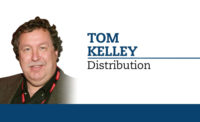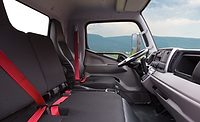Tips to maximize fleets’ productivity
Fleet optimization plans can reduce asset counts, costs

A critical element of a beverage fleet’s benchmarking strategy is, almost paradoxically, the equipment itself. Before looking to reduce miles driven, optimizing fuel usage, hitting sustainability targets and generally enhancing driver productivity, fleet managers should first maximize their trucks’ productivity.
A team might be delivering to more accounts with fewer miles and hours on the road, but are those vehicles spending enough hours on the road?
“If you spent $100,000 on a piece of equipment, you want to see it being used at least 60 percent of the time,” says Steve Golladay, owner and manager of the logistics consultancy Total Systems Thinking Solutions LLC and former vice president of supply chain services and support for Coca-Cola Bottling Co. Consolidated (CCBCC). “I can tell you that some companies are operating a lot thinner, but accomplishing more because they have better fleet utilization.”
Doing more with less should be the real goal of any bottler or distributor’s fleet optimization strategy. Sure, you’re subjecting a single truck to more wear-and-tear if it’s used 50 or 60 percent vs. 35 percent of your business’s total delivery operation time. But, if correctly deployed, companies wouldn’t need to invest in as many such assets.
This fact has been one of the advantages of shifting away from traditional side-loaders to bulk-delivery trailers.
Golladay says fleet managers should ask, “Do I have to have a specialized fleet to handle certain types of deliveries?” Managers also should explore delivering to various customers using similar fleet assets, he adds.
Trucks with bulk trailers hooked up to them are cheaper to maintain and easier to use. If you’re able to deploy those to service a larger number of customers, you’ll be able to not only save on maintenance, but get more accounts picked-to-order and on the trucks.
“If you could change the asset to fit the workload, you can work across different types of delivery methods with a single delivery vehicle,” he continues.
Another big mindset shift involves changing how vehicles are matched with their drivers. Rather than assigning a truck to a particular driver, the vehicle should be assigned to a duty. Even during non-delivery times, an operator can latch a trailer to the tractor to do replenishment runs and drive up utilization even further.
When Golladay was managing CCBCC’s supply chain operations, the company’s drivers switched from a five-day to a four-day, 48-hour work week in major markets.
“They worked rotating schedules and we rotated the trucks between people,” he notes. “The people would work four days, but the truck would work six days, 72 hours a week. And the utilization went way up.”
Ultimately, utilization reached more than 65 percent, up from about 37 percent, he says. Additionally, drivers were less stressed and turnover plummeted.
Granted, most beverage delivery operations aren’t the size of Coke’s largest independent bottler in the United States, but even small operations can benefit from better asset utilization, as long as they have 10 or more vehicles.
However, it’s not just about the number of vehicles and the number of hours that they’re on the road. Rethinking regular maintenance practices plays a significant role. “If you take your hard assets, probably 45 to 50 percent of it is the cost of the capital, the depreciation and taxes.” Golladay notes. “And the rest is the maintenance costs, with different levels for different vehicles.”
If you perform all of your vehicle maintenance in-house, it’s important to assess whether it’s fully optimized or if certain functions that can be outsourced.
Many companies, for example, do their own body work, but does it make sense to have a full-time staffer with that skillset when they’re probably going to be spending more time performing mundane, day-to-day tasks than they are fixing dents and painting vehicles?
“It takes a lot of skill for that person who paints, sands and bonds and if you have sideloaders, it takes even more,” Golladay explains. “Do you need to pay for that kind of skilled labor? It’s a whole thought process, what makes sense to have in-house and what makes sense to outsource, and is there a hybrid piece to that?”
A potential ripple effect of such a process overhaul could be a significant reduction, or even complete elimination, of expensive parts inventory. When companies outsource some or all maintenance functions, the third-party service provider will stock its own parts. The larger the distributor, the more significant the savings, as a bigger company’s parts outlay could crack the seven-figure mark.
When it comes to optimizing overall beverage distribution fleet utilization, Golladay likes to apply a certain equine analogy.
“Fleet assets are like anything else: if you feed them they’ve got to do the work,” he says. “They can’t sit in the barn eating hay all day. They’ve got to plow the field and we’re not going to feed them hay if they’re not going to pull the plow.” BI
Looking for a reprint of this article?
From high-res PDFs to custom plaques, order your copy today!






